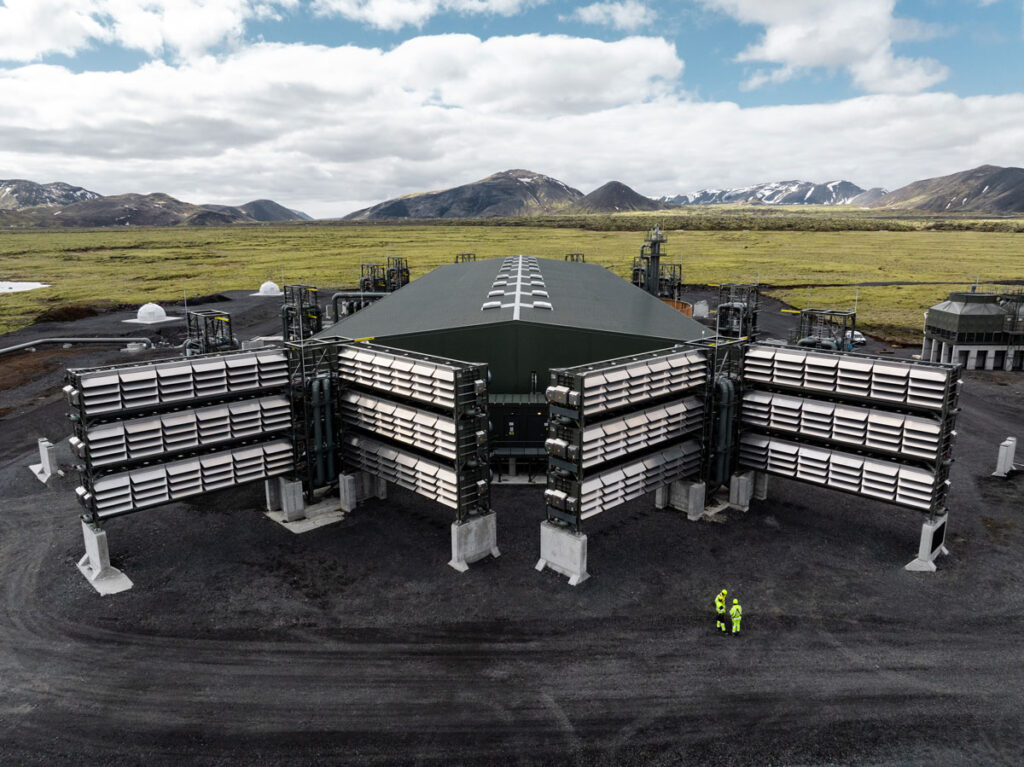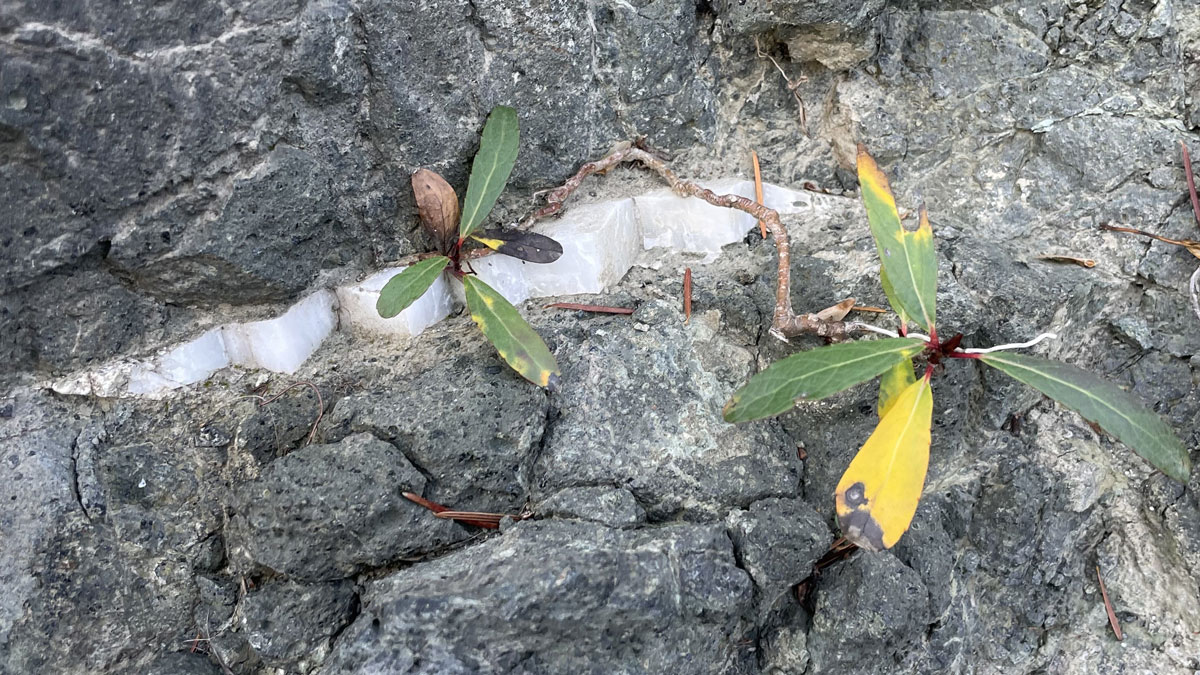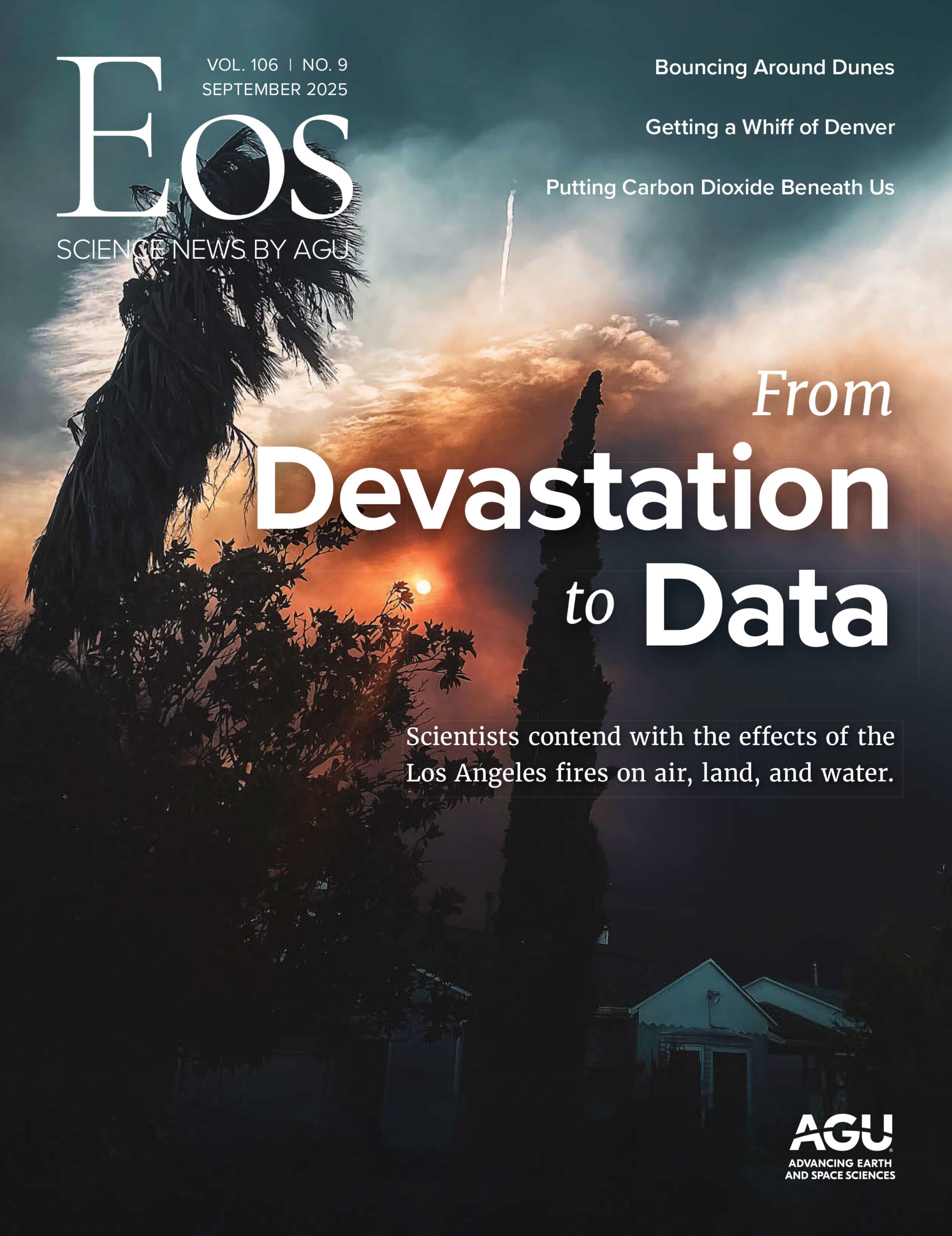A translation of this article was made possible by a partnership with Planeteando. Una traducción de este artículo fue posible gracias a una asociación con Planeteando.
As the world blows past 1.5°C of anthropogenic warming and looks increasingly likely to hit 2.6°C–3.1°C by the end of the century, plenty of controversy still exists, even among geoscientists, about how to slow, stop, or reverse the rapid climate change we are causing. As so many studies have documented, such warming will cause inundation of many coastal cities, trillions of dollars in damage from extreme weather, widespread species extinctions, and unrelenting heat waves. It will also fundamentally threaten financial sectors and economies at all scales.
One thing is clear: To mitigate these outcomes, humanity’s first priority should be to drastically reduce its annual emissions of roughly 40 gigatons (billion metric tons) of carbon dioxide (CO2), the greenhouse gas most responsible for driving warming. Without this reduction, other measures will be only modestly effective at best.
But unfortunately, at this point, the scale of mitigation needed to keep warming to below 2°C–3°C goes beyond reducing annual emissions. We must also remove and store carbon that has accumulated in the atmosphere.
Reducing Annual Emissions Isn’t Enough
The need for emissions reductions has been articulated accurately, passionately, and compellingly for decades. Yet global emissions continue to set new records, increasing 1% in each of the past 3 years. Meanwhile, even as clean and renewable energy (CRE) growth has recently set its own records, global fossil fuel energy consumption has continued to rise, with oil, gas, and coal still accounting for more than 81% of total energy consumption (only 4% less than 20 years ago).
Even under favorable political conditions, CRE consumption, which as a share of global primary energy consumption is growing at roughly 1% per year, has a long way to go to catch up to the roughly 2% annual growth in global energy consumption. Even once CRE growth catches up, it could take decades to reach something like global energy decarbonization, during which we would emit several times more CO2 than we already have.
Not only has focusing on annual emissions over the past few decades failed to reduce them, but it’s also not our annual emissions today (and into the future) that are causing the 1.55°C of warming we’re witnessing. It’s how much CO2 we have already emitted. Our cumulative emissions of 1.8 trillion tons (1,800 gigatons) of CO2 from energy and industry—heavier than the combined mass of all living things on Earth—taken from geologic reservoirs and dumped into the atmosphere, will stay there (and in the ocean) for thousands of years. Even on that happy day when we finally start reducing emissions, we will be the farthest we have ever been from solving the problem, and in fact, we will still be adding to it.
A Big Opportunity
Scientists and practitioners across many disciplines and sectors can play roles in climate change mitigation. Research in the geosciences is fundamental to understanding carbon reservoirs and fluxes between them, as well as past, present, and possible future effects on climate. But it seems clear by now that more climate science, and even better communication of it, is unlikely to inspire the collective or political action needed to activate significant mitigation. So what else can geoscientists offer?
Some see a role in helping to extract natural resources to fill the staggering projected demand for metals such as copper and rare earth elements and to promote the kind of technology-driven sustainability invoked by the mining industry. Geoscientists also contribute to informing approaches to adaptation and resilience, though neither of those constitute mitigation and, in the long run, they are much more expensive than mitigation. The economic impacts of warming have been estimated to be about 12% of global GDP (gross domestic product) per 1°C of warming, and our current trajectory is projected to reduce global GDP by as much as 40% by 2100, with much greater losses in some regions.
Carbon dioxide removal (CDR) is far less risky than the centuries-long geoengineering experiment of using the atmosphere as a sewer.
The biggest opportunity—and perhaps the biggest responsibility—for geoscientists to contribute to mitigation is through facilitating durable carbon dioxide removal (CDR). Concerns are sometimes raised about CDR as a form of climate intervention, or geoengineering, yet it is far less risky than the centuries-long geoengineering experiment of using the atmosphere as a sewer. Indeed, removing gigatons of CO2 per year is essential to net zero strategies and avoiding disastrous amounts of warming, as unequivocally stated by the Intergovernmental Panel on Climate Change, Energy Transitions Commission, and American Physical Society.
Keys to Carbon Removal
Three principles are generally considered fundamental to CDR. First, CO2 already in the atmosphere must be taken out. This principle distinguishes it from point source carbon capture and storage (CCS), which simply reduces new CO2 emissions from fossil fuel energy and industry sources while competing with clean energy.

Many approaches to CDR exist. Direct air capture (DAC), for example, is a rapidly growing method in which CO2 is pulled straight from the atmosphere. Biomass carbon removal and storage (BiCRS) methods capture a fraction of the 480 gigatons of CO2 that plants naturally absorb each year and prevent it from cycling back to the atmosphere by converting biomass to forms that can be isolated and stored.
Other CDR approaches focus on managing ecosystems to stimulate more CO2 removal than would occur naturally, the second of the three principles of CDR. Examples include various strategies for enhanced rock weathering in croplands or forests and for marine CDR, such as using nutrients to promote biomass growth and raising the alkalinity of seawater so it pulls more CO2 from the air.
However CO2 is removed, it must be stored durably, with minimal likelihood to return to the atmosphere for a long time.
Third, and most important, is the fact that however CO2 is removed, it must be stored durably, with minimal likelihood it can return to the atmosphere for a long time. Using captured carbon to create marketable stuff like fertilizer and chemicals may seem economically savvy, but it’s not a durable approach. The entire global industrial demand for CO2 is less than 1% of our annual emissions, and much of this carbon goes right back to the atmosphere or is used for enhanced oil recovery (EOR) to extract more petroleum.
So-called nature- or land-based CDR approaches like afforestation, agricultural practices, and soil management are intuitively appealing alternatives that can remove and store CO2 and, if done right, improve ecosystem health. But these methods are also not very durable. Land plants hold a mass of carbon (~1,650 gigatons in all terrestrial vegetation) almost equivalent to our cumulative emissions, and soils hold 4 times more. However, most of the carbon in plants and soil cycles back to the atmosphere through natural decomposition and disturbances on timescales of years to decades.
Furthermore, anthropogenic warming–driven disturbances to forests and soils, which are becoming bigger and more frequent, may further weaken the durability of nature- and land-based CDR. The 2023 Canadian wildfires alone released almost 3 gigatons of CO2, almost 4 times the annual emissions of global aviation. (These disturbances also threaten to destabilize ancient peat and permafrost, which globally hold a carbon stock equivalent to 5 times our cumulative emissions—yet another reason to pursue CDR.) So although nature- and land-based CDR provides collateral benefits and is inexpensive and ready to deploy, in the context of net zero emissions accounting, it makes sense only as an offset for analogous biogenic (e.g., land use and forestry) emissions, not for the 82% coming mostly from fossil fuel burning.
Apart from the three fundamental principles of CDR, the potential to apply approaches at a large enough scale to make a significant difference is a key consideration. The scalability of DAC on large scales, for example, faces energy and expense concerns. And making a dent in the cumulative emissions load with nature- and land-based approaches like afforestation would require unreasonably huge amounts of land that already has many other competing uses. Meanwhile, the ocean, which already holds about 140,000 gigatons of CO2, offers potential because of its vast size as well as its longer residence times compared with other near-surface reservoirs, notwithstanding questions about its future warming-induced durability.
The Substantial Subsurface
It is becoming increasingly clear that for both capacity and durability, it’s hard to beat subsurface geologic reservoirs.
CDR approaches are diverse and evolving, but it is becoming increasingly clear that for both capacity and durability, it’s hard to beat subsurface geologic reservoirs. The amount of carbon in Earth’s crust is millions of times larger than in all near-surface reservoirs combined, and it stays down there orders of magnitude longer. Estimates suggest that enough subsurface storage capacity exists for at least tens of thousands of gigatons of recaptured CO2, and recent feasibility analyses showed that achieving storage rates of at least 5–6 gigatons of CO2 per year by 2050 is realistic and consistent with current technological trajectories.
Realizing gigaton-scale CDR will be a major challenge—one that requires building support and further developing the needed methods. A few approaches show the most potential.
Captured CO2 can be compressed and injected as a supercritical fluid (sCO2) into saline aquifers or depleted oil and gas fields deep below fresh groundwater and overlain by impermeable rocks. This approach is likely the main storage route for CO2 captured by DAC, as well as by emissions-sourced CCS, and it is something we already know how to do from decades of practice (albeit mostly for EOR). Under the right conditions, several trapping mechanisms minimize the chances of escape for CO2 stored this way.

Another promising approach is direct mineralization, which involves injecting CO2, either as a supercritical fluid or dissolved in water, into reactive mafic and ultramafic rocks to form carbonate minerals. Use of this method is ramping up to scales of millions of tons per year in some places.
Other, relatively new but promising BiCRS methods that leverage plants’ carbon-capturing power involve subsurface injection (often into depleted oil and gas reservoirs) of biomass-derived carbon in the form of bio-oil, pyrolyzed agricultural or forest waste, or other organic (e.g., municipal or livestock) waste.
Challenges for Geoscientists
Given our still-increasing emissions trajectory and need for scalable carbon storage solutions, it’s hard to imagine that CDR through durable subsurface storage won’t grow in the next few decades, especially if carbon policies and incentives shift from favoring emissions reductions and avoidance to removals. With the fossil fuel industry’s interest in propping up its energy production assets, CDR’s cousin CCS may also proliferate. Either way, it is likely that the subsurface will increasingly be the focus of attention and action.
As this focus grows, we must recognize that the subsurface is an increasingly busy place, where water, energy, and mineral resources—not to mention as much as 90% of all microbial life and 10%–20% of all biomass on the planet—interact. This is where the geosciences come in.
It is time for geoscientists to step up and take on a central role in advancing mitigation solutions.
After a century of the fossil fuel industry directly and indirectly defining much of the discipline’s research and educational emphases, it is time for geoscientists to step up and take on a central role in advancing mitigation solutions, specifically durable carbon storage and responsible subsurface management. There will be no shortage of challenges.
Mining, geothermal, and oil and gas production and disposal activities have already increased subsurface fluid fluxes well beyond pre-Anthropocene rates, and projections of these fluxes in 2050 are many times higher. In the United States alone, in addition to the more than 4 million oil and gas production wells, almost a million underground injection wells dispose of a huge variety of both hazardous and nonhazardous materials and waste.
Scaling subsurface carbon storage to gigatons per year will mean injecting massive quantities of a variety of CO2 and carbon-bearing solutions into a wide range of geologic reservoirs and associated waters, creating not only engineering challenges but also challenges of illuminating the efficacy and hazards of injections under many different conditions. Although we understand relatively well how sCO2 and dissolved CO2 behave in some types of subsurface environments, we know almost nothing about the behaviors of novel carbon storage fluids like bio-oil and slurried or torrefied biowaste.

Geoscience’s role in responsible subsurface management will also involve providing new perspectives on basins and igneous provinces to address questions of rock permeability and composition that are important for durable storage, as well as assessing critical risk factors. Risk factors include how fluids migrate and interact with faults and other permeability barriers, the potential for mineral dissolution to mobilize metals and change fluid fluxes, fresh groundwater contamination, and induced seismicity.
Much of this work will necessarily be transdisciplinary, challenging scientists accustomed to traditional and disciplinary emphases to develop shared language and approaches. For example, understanding how carbon storage affects microbial communities (e.g., through species diversity and methanogenesis) and human communities and translating this understanding through public engagement and policies will require geoscientists to collaborate and communicate with biologists, engineers, planners, industry, governments, Indigenous communities, and others.
Rising to the Occasion
Durable carbon storage for CDR may be beneath us literally, but we cannot let it be beneath us figuratively.
Public sentiment toward CDR is improving, although many geoscientists still consider it a distraction from cutting emissions or, worse, a deterrent that will disincentivize emission reductions. But this largely theoretical risk—which, it’s worth pointing out, is also posed by pursuing adaptation and resilience—can be addressed by creating separate targets for CDR and emissions reductions and by other means of deploying CDR strategically. Others may see durable CDR as being complicit with the fossil fuel industry and its tragic delay and distraction tactics or as antithetical to intuitively appealing nature-based approaches.
We need to be clear-eyed about the fact that humanity’s cumulative emissions put us on a path that requires gigatons per year of durable CDR to have any hope of avoiding 2°C–3°C of warming.
But we need to be clear-eyed about the fact that humanity’s cumulative emissions, both to date and in the future (even under optimistic projections), put us on a path that requires gigatons per year of durable CDR to have any hope of avoiding 2°C–3°C of warming. And however it is done, most of that captured carbon needs to be stored in geologic reservoirs.
Developing and responsibly managing subsurface carbon storage pose historic challenges for the geosciences. Rising to meet these challenges will serve society and the planet by helping mitigate disastrous outcomes of climate change. It may also shift long-standing public perceptions of the field as anachronistic and out of touch and create an inspiring mission for new generations of geoscientists.
Author Information
Peter Reiners ([email protected]), University of Arizona, Tucson


